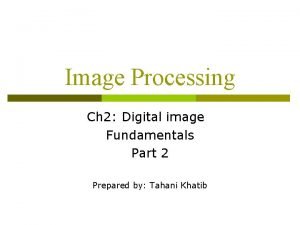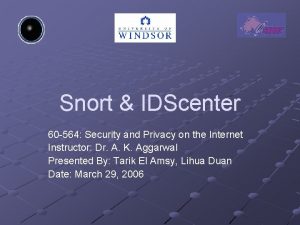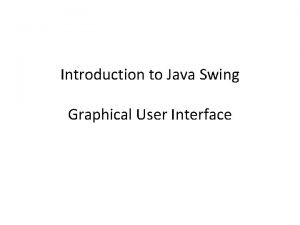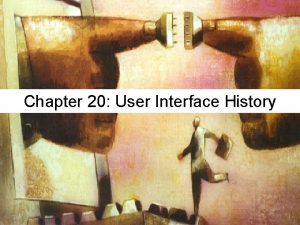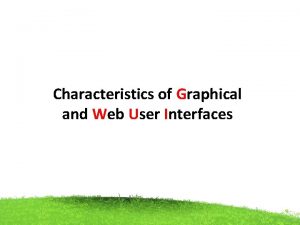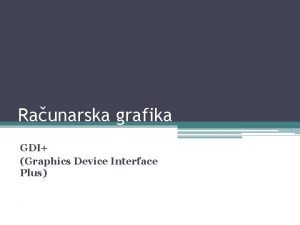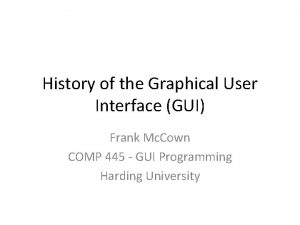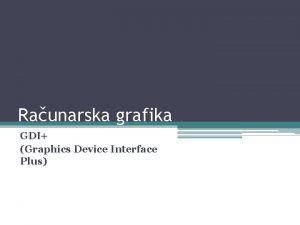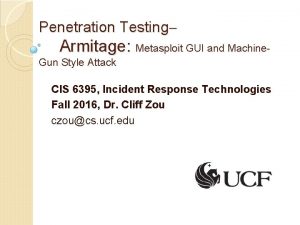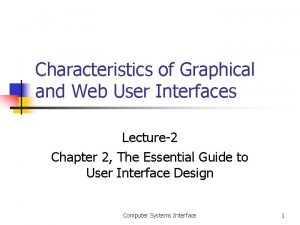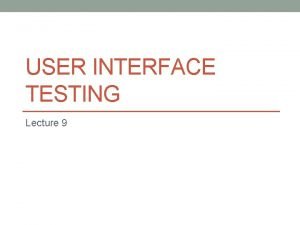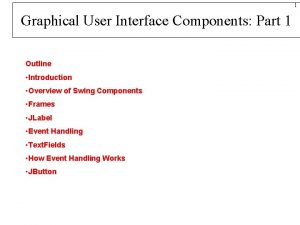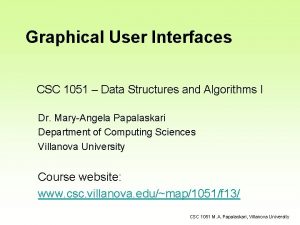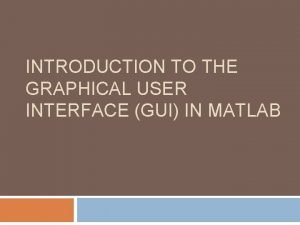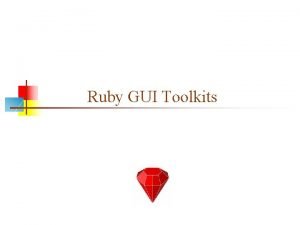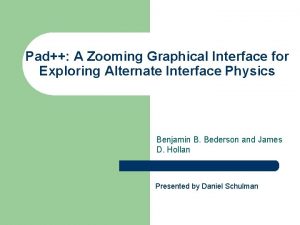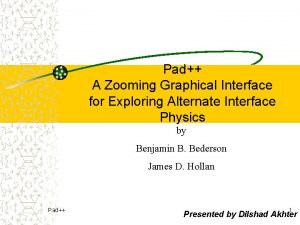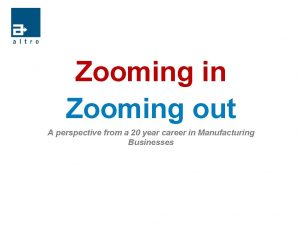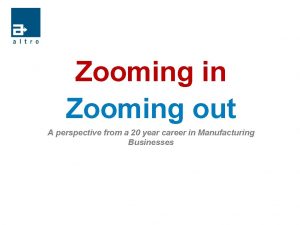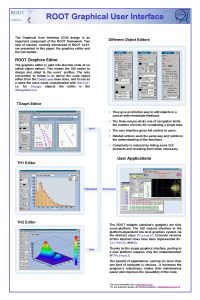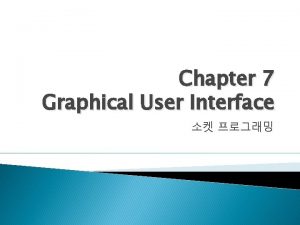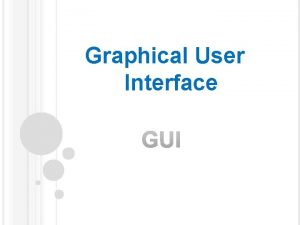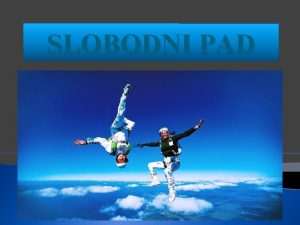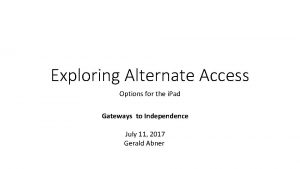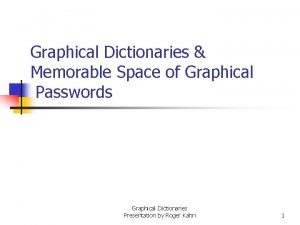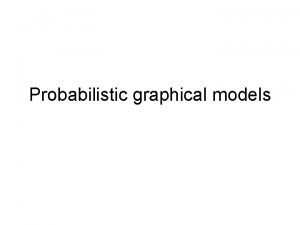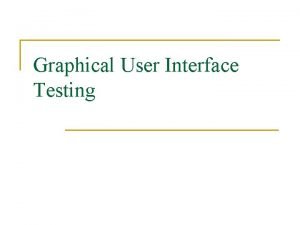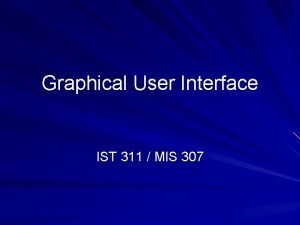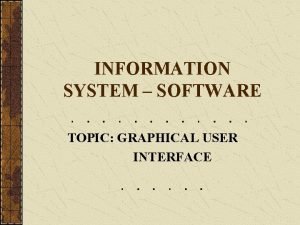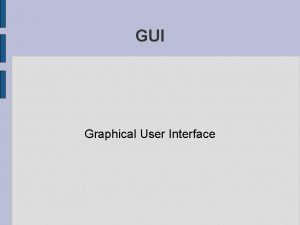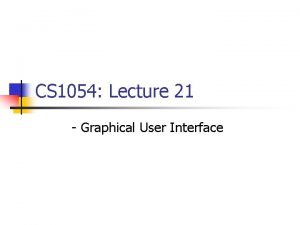Pad A Zooming Graphical Interface for Exploring Alternate



















- Slides: 19

Pad++: A Zooming Graphical Interface for Exploring Alternate Interface Physics Presented By: Daniel Loewus-Deitch

Introduction • Pad++ is a zooming graphical interface. • Possible alternative to traditional windows/icon interface design. • A different direction than many other groups exploring 3 D virtual worlds.

Metaphor vs. Physics • Metaphor-based approaches have certain limitations – Too much focus on old media. – Underutilizing potential of mechanisms associated with new computerized media. • Physics approach views interface design differently – Appearance and behavior of informational objects.

Metaphor vs. Physics • Examples of informational physics: – Useful representations to show extent of use for an object (i. e. dog-eared pages in real world). – History-enriched digital objects. – New physics for interacting with graphical data (i. e. zooming).

Metaphor vs. Physics • 4 problems with metaphor-based model: – Metaphors always pre-exist their use. • Metaphor must be familiar. • Limits resources and choices.

Metaphor vs. Physics – Metaphors are temporary bridging concepts. • Eventually they die as a metaphor and take on a common meaning in the computer environment. • After metaphor dies, it can still restrict functionality when trying to keep the metaphor from being violated. – Metaphor-based interface is not easily scalable. – Metaphors may lead users to expect functionality associated with the source object that is not actually included in the interface.

Metaphor vs. Physics • Issues with physics-based model – Can’t rely on user familiarity to same extent (learnability consequences). – Make sure physics mechanisms are easily discoverable and learnable.

Motivation • Desktop metaphor has hit a dead end. • Present large amounts of information with the same rich structure and dynamic character of the real world. • Create physics that symbolically relate to informational objects and exploit semantic relationships. • Attempting to fully utilize our natural spatial abilities.

Motivation • Pad++ provides more choices than just the inclusion or exclusion of information. • Make it easier to find specific information in large dataspaces. • Complements traditional filtering and recommendation approaches. – Highly rated information is largest. – Lower rated information is smaller and off to the side.

Pad++ System • General purpose • Supports these standard objects: – Colored text – Text files – Hypertext – Graphics – Images • Zooms around current cursor position.

Pad++ System • Originally designed for use with a 3 -button mouse. • Semantic zooming – When zoomed out, object is represented differently. It is not just scaled down.

Recent Advances • Focus on smooth zooming with large graphical datasets. • Essential that frame rates be consistently maintained because of nature of interaction. • Coded in C++

Efficiency • New efficiency methods: – Spatial indexing – Restructuring – Spatial level-of-detail – Clipping – Refinement – Adaptive render scheduling • Search for balance between local detail and global context.

Efficiency • Parallel lazy loading – Helps avoid start-up costs of parsing and loading database when accessing external information sources. – Only loads portion of database that is currently visible. – Performed in background. • Ephemeral objects – Automatically deleted if not viewed within several minutes.

Hypertext • Multiscale layouts – Graphically represent parent-child relationship between links. – Linked data is loaded to side and made smaller. Then view is animated to center new data.

Interface to TCL/TK • 3 classes: – Create objects – Handle objects – Render scene • Every object assigned a unique integer id. • Procedural objects support semantic zooming.

Interface to TCL/TK • Navigation and search mechanisms provided. • Most of panning is performed while zoomed out. – Gives sense of context. – Speeds up animation.

Visualizations • Pad++ directory browser – For viewing large hierarchical databases. – Square frame = directory – Solid square = file – Text names shown when zoomed in. – Search by zooming in and out of directory tree or by content-based search. – Zooming into file loads text inside colored square.

Visualizations • Timeline – Helpful to look at history using different scales. – Zoom into particular years to see content in detail.
 Semantic zooming
Semantic zooming Zooming and shrinking in digital image processing
Zooming and shrinking in digital image processing Zooming and shrinking of digital images
Zooming and shrinking of digital images Graphical user interface design principles
Graphical user interface design principles Snort graphical interface
Snort graphical interface Java graphical user interface
Java graphical user interface History of the graphical user interface
History of the graphical user interface Characteristics of graphical user interface
Characteristics of graphical user interface Principles of user interface design
Principles of user interface design Pen color
Pen color History of user interface
History of user interface Graphical device interface with c
Graphical device interface with c Armitage metasploit
Armitage metasploit Web based interface
Web based interface Characteristics of graphical user interface ppt
Characteristics of graphical user interface ppt Graphical user interface testing
Graphical user interface testing Components of graphical user interface
Components of graphical user interface Jpanel
Jpanel Graphical user interface
Graphical user interface Ruby gui
Ruby gui


